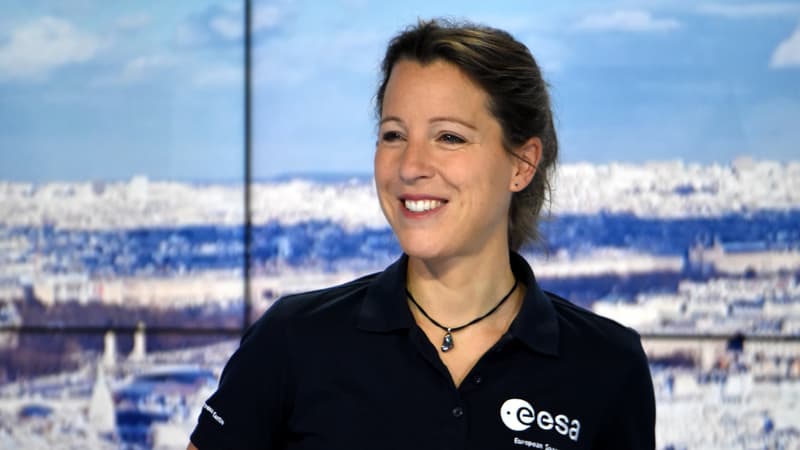In his son’s room, a single poster as decoration: that of a rocket. Sophie Adenot is 40 years old today and she is no longer content to look at containers on paper. In a few years she will be able to travel aboard these machines.
Sophie Adenot is one of the five people selected to join the new promotion of European astronauts, presented this Wednesday by the European Space Agency (ESA). She is the second Frenchman, after Claudie Haigneré in 1999, to integrate this ultra-selective organization.
It was his predecessor who made him want to do this job. On BFMTV this Thursday, Sophie Adenot says the first trigger for her to move onto a science course was reading Marie Curie’s biography at age 12. Her second revelation: seeing Claudie Haigneré on a space mission. Specifically, it left for 16 days, in 1996, on a Franco-Russian manned flight as part of the Cassiopée mission.
“From now on, I’ll do whatever it takes to get there,” Sophie Adenot told herself, she says on BFMTV.
A season at Supaéro and MIT
Originally from Burgundy, she studied at the Higher Institute of Aeronautics and Space (ISAE-Supaéro), in Toulouse, and at MIT, in the United States. Her first job was at Airbus, where she worked as a research engineer designing helicopter cabins.
However, she ends up feeling more attracted to the interior of the cabin. In 2005, she joined the Air Force. She started there as a “search and rescue pilot at the Cazaux airbase and participated in various rescue flights in desert and hostile environments,” the ESA explains. on your site.
The new astronaut served as a training flight leader and mission captain with the high-authority transport squadron at Villacoublay and as a helicopter test pilot, the first woman to hold this position in France.
This position consists of “testing the new technologies that will be installed on board airplanes or helicopters”, to make sure that they are “efficient” and comply with safety conditions, the new astronaut explains on BFMTV this Thursday.
In this capacity, the lieutenant colonel tested 22 different types of equipment. During his career, he logged “3,000 flight hours,” he told the ESA press conference on Wednesday.
Selected from more than 22,500 applicants
This mother of a toddler can now add the line “astronaut” to her CV. To access this position, Sophie Adenot had to go through the different stages of a selection process that lasted more than a year, with psychological evaluation, medical tests, interviews…
“I had prepared for that, now you are never really sure when you know there are 22,500 candidates running. It is very long preparation work and each stage brings its share of suspense before having the final answer,” she told BFMTV on Wednesday.
A successful preparation, even if the job is far from over. The pilot will “go back to school” in the spring of 2023, to follow a training course that will take place in particular at the European Astronaut Center in Cologne, Germany.
No mission for a few years.
It is “a year of basic training where we learn all the space systems, all the subjects of space mechanics, all the elements that will allow us to understand how to operate the basic systems of the international space station,” he explained this Thursday.
Then comes the operational part: “When a mission is planned for a designated astronaut, we will go through ‘mission-specific training.’ [entraînement visant à une mission spécifique, NDLR] and that usually lasts two years.
All for an exit into space that, therefore, should not take place before 2026. “It is the great minimum”, explains the engineer, the cycle only begins in 2023. Thomas Pesquet, for example, from the promotion of astronauts 2009 Europeans had to wait until 2016 to carry out its first mission.
If a mission in space might seem stressful, Sophie Adenot can count on some of her many skills to relax: On BFMTV this Thursday, she confesses that she’s also a yoga teacher.
Source: BFM TV


